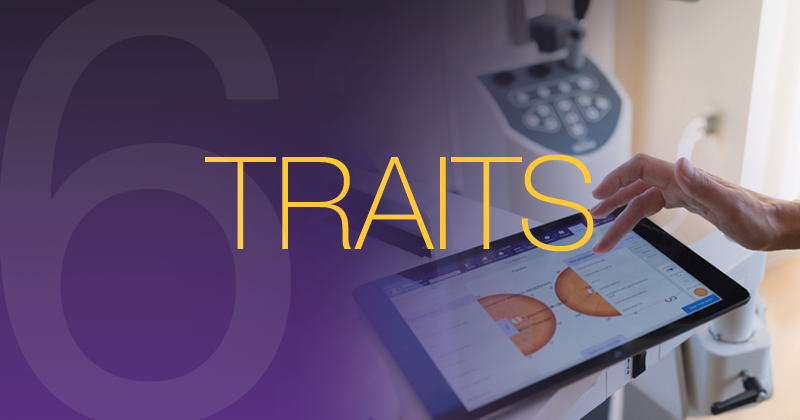Six Traits to Seek in a New EMR System

This article was sponsored by Modernizing Medicine. Read the original article published in Ophthalmology Management here.
Prioritizing patients over charting with ophthalmology EMR software
I know some practices that still use EMR systems designed and implemented many years ago, and, frankly, those systems may be obsolete. For example, one EMR system that’s been on the market for almost 15 years still requires everyone using the chart to type inordinate amounts of data for each patient. If this sounds like your practice, now is a good time to consider acquiring a new EMR system. Recent advances can help you to improve workflows, manage your business more effectively, and deliver higher-quality patient care. Indeed, here are some traits to look for to help narrow your choices and identify the EMR system that best meets your needs.
1. Native cloud-based technology
This is one of the top features to look for in a new EMR system. Server-based systems tend to be dated, slow, and lacking in data protection. Cloud-based systems, meanwhile, are increasingly prevalent, for many good reasons. For one, virtually all you need to operate a cloud-based system is a broadband connection. The vendor is responsible for storing and securing your data and for backups and redundancy to help protect against data loss. For another, cloud-based EMRs, especially those with a native app that can be downloaded to a tablet, are simpler and easier to use. There are few moving parts and no local servers to break down. Instead of downloading a new version of software, adding it to a server, and hoping it works, you simply leave your tablet plugged in overnight and updates are automatically downloaded and ready to use the next day. Finally, cloud-based EMR systems can be far less expensive overall. A traditional EMR server system requires an IT company or professional to maintain it. With a cloud-based EMR, you simply pay a monthly fee based on the number of providers in your practice for the software and associated services.
2. Easy data entry
One of the biggest pain points of many EMR systems centers on time-consuming data entry. The fact is, the easier it is to enter data into an EMR, the faster you can get back to taking care of patients. Today’s best EMR systems enable physicians to either tap in or dictate structured patient data into a tablet, with minimal or no typing. This keeps practice workflows moving quickly and efficiently.
3. In-depth analytics
Chances are you’re not using your EMR for much more than documenting adherence to government regulations. But today’s EMR systems can help you be a better doctor. The best systems have many places to quickly and discreetly document structured patient care data. This data allows for analyses that can reveal potential areas for improvements in care and treatment.
4. Seamless integration with your practice
Many older EMR systems still on the market were designed to serve only as EMR systems. But today’s most advanced EMRs function as integrated “ecosystems” that deliver practice management, image management, optical inventory control, and patient engagement capabilities. This greatly simplifies office workflow and efficiency.
5. Multi-specialty capabilities
Ophthalmology doesn’t consist of just one type of doctor, and it’s likely your practice doesn’t either. A retina specialist’s needs are vastly different from those of a high-volume cataract surgeon. Whether your practice is a single- or multi-specialty, the best EMR systems available today can accommodate those varying workflows.
6. Company stability and reliability
In 2010, roughly 20 companies provided ophthalmology-specific systems, but that number has dwindled. If you can, determine the company’s level of financing, as it can be a telling indicator of its stability. Similarly, evaluate its customer service capabilities. How many service reps are employed and where are they located? Obtaining references from current clients is also a good idea.
It’s all about the patient
Choosing the right EMR system for your practice is vitally important. After all, if your ophthalmologists are taking care of charts instead of patients, those patients will find another doctor who will put the focus on them.





